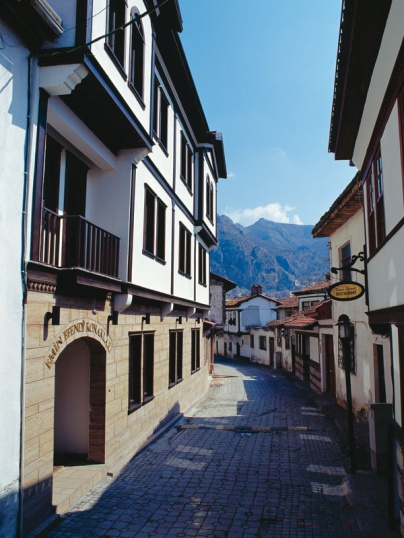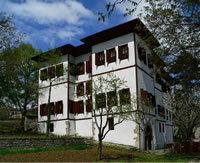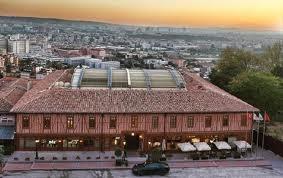|
Cappadocia - Gamirasu - Cappadocia
|
|
|

|
Gamirasu is the name of an exquisitely restored 30 rooms troglodyte cave house opened
in 1999, in Ayvali Village near Urgup in the heart of Cappadocia, Turkey. The hotel
is located in a restored thousand-year-old Byzantine monastic retreat which offers
modern conveniences without distracting from the spiritual feeling of the area which
has been known to be inhabited for more than five thousand years. Gamirasu cave
Hotel is featured in major international travel guides as one of the best cave hotels
of Cappadocia. It is also mentioned as a romantic escape for honeymoons in wedding
magazines.
|
|
|
|
|
Emin Efendi Konaklari - Amasya
|
|
|

|
Emin Efendi Mansions rising up in the city walls of the Anecient rome period and
loolong against the Rocks Tombs. This historic building was resorted to traditional
modern hotel.
|
|
|
|
|
Havuzlu Konak - Safranbolu
|
|
|

|
Havuzlu Asmazlar Mansion has traditional rooms which are large volume, with air-condition
and decorated traditionally. In the left side of the entrance the big lounge welcomes
guests with its unique pool. A breakfast having near the pool with brass server
or a five o’clock tea gives you the thrill of a lifetime.
With its lionhead sink and the gurgle of this sink, the saloon having pool which
is like a part of heaven gives serenity and peace to its guests and takes them to
the incomparable pages of history. Sunshine, coming from the flower crocheted curtains
all around the saloon, makes inside more lively and bright. Chinaware bowls, brass
candlesticks arranged on the round metal trays, were designed in front of the sofas,
creates such an atmosphere that you can only imagine from tales.
|
|
|
|
|
Divan Hotel Cukurhan - Ankara
|
|
|

|
The Çukurhan is located opposite to the main entrance of the Ankara Citadel, close
to the site which was formerly known as the Horse Market, and on the west side of
the present Çengelhan Rahmi M. Koç Museum. Under the Ottomans, the Han was affiliated
to Sheikh ul-islam (the chief religious official in the Ottoman Empire) Ankaravî
Mehmed Emin Efendi Foundation.
The brick and stone building with wooden planks and bays has a tile roof and is
supposed to have been built in the late 16th or early 17th century. The Çukurhan
functioned as a typical Ottoman city caravanserai: in other words it was an Inn
with a marketplace in the courtyard. It retained its commercial importance through
the years with many shops and workplaces that sold a vast range of goods including
mohair, wool, grains, dried fruits, vegetables, etc.
In 1950 the Çukurhan caught fire and was seriously damaged. Soon after that, the
building was repaired but mostly lost its original form and abandoned at the end
of the 20th century.
The Han, also placed in the “Watch List of 100 Most Endangered Sites of the World”
announced by World Monuments Fund (WMF), was leased on a “Renovate-Operate- Transfer”
basis in October 2006 by Çengelhan Inc., which is a company of the Rahmi M. Koç
Foundation for Museology and Culture, from the Turkish Prime Ministry General Directorate
of Foundations, Ankara Regional Directorate. The restoration period of the Çukurhan
began in October 2007 and lasted to May 2010. Throughout the two-and-a-half-year
restoration process enormous care and attention was paid to the preservation of
the original state of the building. This extended to glassing the entire courtyard
area.
|